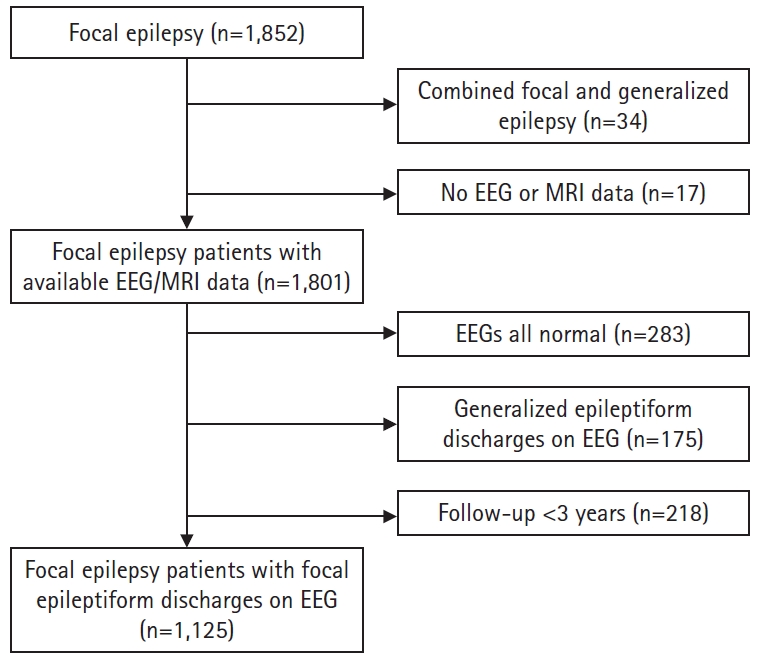1. Hauser WA, Annegers JF, Kurland LT. Incidence of epilepsy and unprovoked seizures in Rochester, Minnesota: 1935-1984. Epilepsia 1993;34:453-68.


2. Hauser WA, Rich SS, Lee JR, Annegers JF, Anderson VE. Risk of recurrent seizures after two unprovoked seizures. N Engl J Med 1998;338:429-34.


3. Camfield P, Camfield C. Incidence, prevalence and aetiology of seizures and epilepsy in children. Epileptic Disord 2015;17:117-23.


4. Duncan JS, Sander JW, Sisodiya SM, Walker MC. Adult epilepsy. Lancet 2006;367:1087-100.


5. Aaberg KM, Gunnes N, Bakken IJ, Lund Soraas C, Berntsen A, Magnus P, et al. Incidence and prevalence of childhood epilepsy: a nationwide cohort study. Pediatrics 2017;139:e20163908.


7. Lavados J, Germain L, Morales A, Campero M, Lavados P. A descriptive study of epilepsy in the district of El Salvador, Chile, 1984-1988. Acta Neurol Scand 1992;85:249-56.


8. Camfield CS, Camfield PR, Gordon K, Wirrell E, Dooley JM. Incidence of epilepsy in childhood and adolescence: a population-based study in Nova Scotia from 1977 to 1985. Epilepsia 1996;37:19-23.


9. Dura-Trave T, Yoldi-Petri ME, Gallinas-Victoriano F. Incidence of epilepsies and epileptic syndromes among children in Navarre, Spain: 2002 through 2005. J Child Neurol 2008;23:878-82.


10. Berg AT, Levy SR, Testa FM, Shinnar S. Classification of childhood epilepsy syndromes in newly diagnosed epilepsy: interrater agreement and reasons for disagreement. Epilepsia 1999;40:439-44.


12. Noachtar S, Bilgin O, Remi J, Chang N, Midi I, Vollmar C, et al. Interictal regional polyspikes in noninvasive EEG suggest cortical dysplasia as etiology of focal epilepsies. Epilepsia 2008;49:1011-7.


14. Blume WT, Kaibara M, Holloway GM, Young GB. Blume's atlas of pediatric and adult electroencephalography. Philadelphia: Lippincott Williams & Wilkins; 2010.
15. Dash GK, Rathore C, Jeyaraj MK, Wattamwar P, Sarma SP, Radhakrishnan K. Interictal regional paroxysmal fast activity on scalp EEG is common in patients with underlying gliosis. Clin Neurophysiol 2018;129:946-51.


16. Noli D, Bartuluchi M, Gonzalez FS, Kaltenmeier MC, Cersosimo R, Rugilo C, et al. Type II focal cortical dysplasia: electroclinical study and surgical outcome in 31 pediatric patients. Childs Nerv Syst 2013;29:2079-87.


18. Pal DK, Ferrie C, Addis L, Akiyama T, Capovilla G, Caraballo R, et al. Idiopathic focal epilepsies: the "lost tribe". Epileptic Disord 2016;18:252-88.


19. Blum AS, Rutkove SB. The clinical neurophysiology primer. Totowa: Humana Press; 2007.
20. Conrad EC, Chugh N, Ganguly TM, Gugger JJ, Tizazu EF, Shinohara RT, et al. Using generalized polyspike train to predict drug-resistant idiopathic generalized epilepsy. J Clin Neurophysiol 2020 Dec 8 [Epub].
https://doi.org/10.1097/WNP.0000000000000803

21. Jensen CD, Gesche J, Kroigard T, Beier CP. Prognostic value of generalized polyspike trains and prolonged epileptiform EEG runs. J Clin Neurophysiol 2021;38:208-12.


22. Epitashvili N, San Antonio-Arce V, Brandt A, Schulze-Bonhage A. Scalp electroencephalographic biomarkers in epilepsy patients with focal cortical dysplasia. Ann Neurol 2018;84:564-75.


23. Kuruvilla A, Flink R. Focal fast rhythmic epileptiform discharges on scalp EEG in a patient with cortical dysplasia. Seizure 2002;11:330-4.


24. Ferrer I, Pineda M, Tallada M, Oliver B, Russi A, Oller L, et al. Abnormal local-circuit neurons in epilepsia partialis continua associated with focal cortical dysplasia. Acta Neuropathol 1992;83:647-52.














